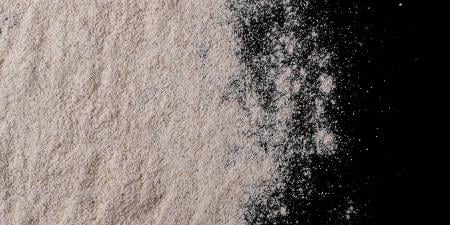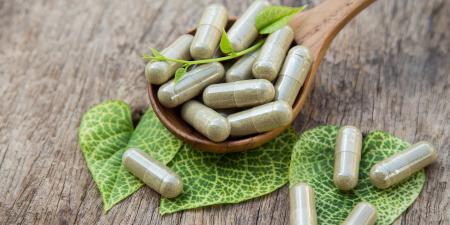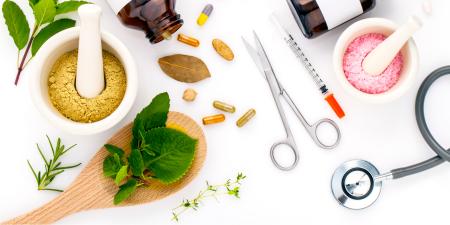When I saw Mr. S in my office 9 years ago, he had high cholesterol, with a low-density lipoprotein cholesterol (LDL-C) of 180 mg/dl, so I started him on statin therapy. Six months later, his lipids were significantly improved and I tried to renew his prescription for atorvastatin. He gave me a sly grin and told me that he had stopped taking it. Instead, he was taking red yeast rice, an over-the-counter herbal medication he had heard about on a local radio station. I had never heard of this supplement, but when several more patients related almost identical stories, I began to listen to them. It seemed to work especially well in patients who developed myalgias, or muscle aching, after they took statins, which occurs in up to 15 percent of patients in clinical practice. It was well-tolerated and seemed to lower cholesterol almost as well as conventional therapy.
Red yeast rice, used in China since 800 CE as a food colorant and medication, is made by culturing a yeast, Monascus purpureus, on rice. It is widely available and popular; sales of red yeast rice in the United States totaled $20 million in 2008 [1]. Still, I was quite reluctant to recommend it to my patients. Many physicians have appropriate concerns about using over-the-counter products that have not been rigorously evaluated in double-blinded randomized controlled trials. The small studies that have been conducted are often funded by the manufacturer of the supplement, presenting a conflict of interest. Yet our patients are taking more and more supplements; the nutraceutical market in the U.S. has grown to $15 billion over the past few years. Patients often do not tell their physicians that they taking supplements, and this can lead to adverse drug interactions with prescribed medications. For example, products made from the herb St. John’s Wort, commonly used for depression, can significantly alter the lipid-lowering effect of statins, including rosuvastatin, making it dramatically less effective [2].
As a preventive cardiologist in private practice, I have an interest in intensive lifestyle modification programs and have led such a program for 16 years. Based on my clinical observations about the possible efficacy of red yeast rice, one of my partners and I decided to design a trial evaluating the lipid-lowering effects of both lifestyle changes and supplements. This involved an unusual twist for a cardiologist in private practice—getting internal review board approval for the study, recruiting patients, and obtaining funding.
After securing grants from the Commonwealth of Pennsylvania and other sources, we designed and conducted several randomized controlled trials evaluating the efficacy and safety of red yeast rice in different populations with hyperlipidemia. The studies were all funded by independent sources with no industry involvement. We examined the effects of lifestyle changes (education, diet, exercise, and stress management) on lipids and compared red yeast rice’s lipid-lowering effect to that of a placebo. We added other lipid-lowering supplements, fish oil and phytosterols, to red yeast rice, to evaluate their combined effects. We also tested our theory that red yeast rice might be better tolerated than statins in patients who had developed statin-associated myalgias. Our work on red yeast rice exemplifies how a supplement used by many patients can be rigorously studied and evaluated for efficacy and safety.
Despite these trials, the use of these products remains controversial for the following reasons:
- Is it a supplement or a drug? The FDA ruled in 1998 that a proprietary product containing red yeast rice (Cholestin), used in a trial by Heber [3], was a drug, and removed it from the market because one of its active ingredients was identical to the prescription drug lovastatin (Mevacor), made by Merck. The FDA has subsequently removed several other red yeast rice products for the same reason, but many products remain readily available to consumers, including several brands used in recent trials.
- Products are not standardized and the quantity and quality of active ingredients (in this case, monacolins, which are also the source of red yeast rice’s characteristic red color) are variable. We recently studied the level of monacolins in 12 different red yeast rice products and found a 100-fold difference in the levels of monacolins among them [4]. In addition, an agricultural byproduct called citrinin, which is carcinogenic in animals, was present in several brands. This lack of consistency is a common issue in many over-the-counter supplements.
- There is a lack of mortality data for red yeast rice. Only one study has evaluated mortality, and more data are needed [5].
- Many patients prefer taking alternative therapies to prescription drugs. Most physicians appropriately recommend statin therapy for their hyperlipidemic patients. However, almost 50 percent of patients stop taking their statin within 1 year or refuse to take statins altogether because of a fear of potential side effects or a desire to take “natural” products.
- The product is available over the counter, and patients may take it without physician oversight. Red yeast rice and statins have similar potential side effects, including liver toxicity and muscle damage. Patients should only take it under the supervision of a physician and should have laboratory monitoring at least twice a year to evaluate lipid parameters and liver function.
The recent trials involving red yeast rice have led to the following conclusions:
- Red yeast rice is effective in lowering LDL-C, total cholesterol, and triglycerides and may modestly raise HDL-cholesterol. Studies suggest LDL-C lowering effects of 21-30 percent.
- Red yeast rice may be effective lipid-lowering therapy for patients who have experienced statin-associated myalgias [6]. There are several reasons why red yeast rice seems to be better tolerated than statins. There are 14 different naturally occurring monacolins. One of these, monacolin K, is structurally identical to lovastatin, but the dose of monacolin K needed to lower LDL-C cholesterol 25 percent is about 6 mg per day—much less than the standard 20-40 mg doses of lovastatin that were used in clinical trials. The amount of monacolin K in red yeast rice may be low enough to avoid triggering myalgias, or the other monacolins in red yeast rice may act synergistically to lower cholesterol without causing musculoskeletal discomfort.
- Red yeast rice may be an alternative for patients with hyperlipidemia who want a “natural” therapy and refuse to take statins. There are safe red yeast rice products on the market, but some products contain little active ingredient (monacolins) and/or citrinin, a potentially nephrotoxic byproduct of fermentation. All red yeast rice products remain unregulated and their legal status is ill-defined.
In conclusion, red yeast rice is an over-the-counter supplement that has been used in China for centuries and has lipid-lowering effects. More recently, it has become popular among Americans, who often view it as an alternative to statins. Unlike most herbal supplements, it has been fairly well-studied and shown to be effective and safe in several randomized placebo-controlled clinical trials [7]. For this reason, it has been used as an example of a traditional Chinese medication that is effective and may have a role in contemporary Western medicine. Because it is an unregulated supplement, different products are not standardized. Until regulation and standardization improve, its use will remain controversial.
References
-
Nutrition Business Journal Supplement Business Report 2009. Boulder, CO: Penton Media; 2009.
- Gordon RY, Becker DJ, Rader DJ. Reduced efficacy of rosuvastatin by St. John’s Wort. Am J Med. 2009;122(2):e1-e2.
- Heber D, Yip I, Ashley JM, Elashoff DA, Elashoff RM, Go VL. Cholesterol-lowering effects of a proprietary Chinese red-yeast-rice dietary supplement. Am J Clin Nutr. 1999;69(2):231-236.
-
Gordon RY, Cooperman T, Obermeyer W, Becker DJ. Marked variability of monacolin levels in commercial red yeast rice products: buyer beware! Arch Intern Med. 2010;170(19):1722-1727.
- Lu Z, et al. Effects of Xuezhikang, an extract from red yeast Chinese rice, on coronary events in a Chinese population with previous myocardial infarction. Am J Cardiol. 2008;101(12):1689-1693.
- Becker DJ, Gordon RY, Halbert SC, French B, Morris PB, Rader DJ. Red yeast rice for dyslipidemia in statin-intolerant patients: a randomized trial. Ann Intern Med. 2009;150(12):830-839.
- Gordon RY, Becker DJ. The role of red yeast rice for the physician. Curr Atheroscler Rep. 2011;13(1):73-80.



